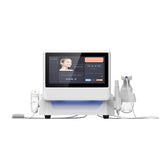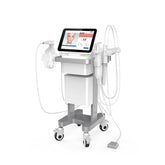Beauty equipment popularization: new trend of technological skin care
Beauty equipment is gradually becoming a popular choice for modern skin care and beauty. With the advancement of technology, beauty equipment is no longer exclusive to professional beauty salons, and many home beauty equipment have emerged. Not only do they deliver dramatic cosmetic results, they also help consumers easily perform skin care at home. This article will introduce you to common types of beauty instruments, their working principles and how to choose the one that suits you.
1.Main types of beauty equipment
Beauty instruments can usually be divided into the following categories based on their functions and principles of action:
Radio frequency (RF) beauty instrument:
Principle: The radiofrequency beauty instrument uses the thermal effect generated by radiofrequency energy (electromagnetic waves) to act on the deep tissue of the skin and stimulate the production of collagen, thereby tightening the skin and reducing fine lines and wrinkles.For example,Newangie EMS RF Body muscle Sculpting Machine.
Scope of application: Mainly used for anti-aging, facial lifting, skin tightening, etc.
Ultrasonic beauty instrument:
Principle: The ultrasonic beauty instrument uses high-frequency vibration ultrasonic waves to transfer energy to the deep layers of the skin, promote blood circulation and metabolism, and help the skin better absorb nutrients in skin care products.
Scope of application: Suitable for improving skin absorption capacity, reducing fine lines, and brightening skin tone.
Microcurrent beauty instrument:
Principle: The microcurrent beauty instrument simulates the human body's biocurrent through tiny currents, stimulating facial muscles and skin tissue to achieve lifting and tightening effects.
Scope of application: Commonly used to enhance facial contours, improve facial sagging, and increase skin elasticity.
LED light therapy beauty instrument:
Principle: LED light therapy beauty instrument uses LED light of different wavelengths to act on the skin. Different colors of light such as red light, blue light, and green light have different effects. For example, red light helps with anti-aging and promotes collagen production, while blue light can be used to treat acne.
Scope of application: Suitable for anti-aging, acne treatment, stain reduction, etc.
Microneedle beauty instrument:
Principle: The microneedle beauty instrument uses tiny needles to create tiny wounds on the surface of the skin, stimulating the skin's self-repair process and promoting the production of collagen and elastin.
Scope of application: Suitable for improving acne scars, fine lines, loose skin, uneven skin tone and other problems.
Cryolipolysis instrument:
Principle: The cryolipolysis device uses freezing technology to cool fat cells to low temperatures, causing them to naturally undergo apoptosis and be excreted through body metabolism.
Scope of application: Mainly used for fat reduction and body sculpting, especially suitable for the treatment of local fat accumulation.
2.Selection guide for beauty equipment
When choosing a beauty device, consumers should make a decision based on their skin type, needs and budget. Here are some suggestions for purchasing beauty equipment:
Understand skin needs: Different skin types and concerns require different beauty devices. For example, if you want to improve skin sagging and anti-aging, you can choose a radio frequency or microcurrent beauty device; if you want to fade acne and spots, you can choose an LED light therapy device.
Pay attention to safety: Make sure the beauty equipment you choose has passed relevant certifications and follow the operating instructions in the manual during use to avoid unnecessary skin damage.
Check user reviews: Before purchasing, you can refer to other users’ experiences and reviews to understand the actual effects and possible problems of the instrument.
Consider frequency of use and convenience: Some beauty devices require regular use to see results, so choosing those that are simple to operate, easy to clean and maintain can enhance the experience.
Budget and cost-effectiveness: The price of beauty equipment ranges from hundreds to thousands. Consumers should choose products with high cost-effectiveness based on their budget and needs. Although some high-end beauty equipment are more expensive, their effects are more significant and long-lasting, and may be worth the investment.
3.How to use beauty equipment correctly
Even highly effective beauty equipment may be less effective or even cause damage to the skin if used improperly. Therefore, here are some things to note when using beauty equipment:
Follow the instructions for use: Before first use, be sure to read the product's instruction manual carefully to understand the correct operation method and frequency of use.
Keep the skin clean: Before using the beauty instrument, make sure the skin has been thoroughly cleansed, and apply the corresponding introduction gel or essence according to the requirements of the instrument.
Step by step: When using it for the first time, it is not advisable to overuse it or use it for a long time. You should start with a low level and a short time, and then increase the intensity or extend the use time after gradually getting used to it.
Regularly maintain the instrument: Keeping the instrument clean and performing regular maintenance can not only extend the service life of the instrument, but also ensure the effectiveness of each use.
Persistence in use: The effects of beauty equipment usually appear gradually, and it takes a period of time to see significant improvements. Therefore, it is very important to establish regular usage habits.
Conclusion
Beauty equipment provides modern people with more convenient and efficient skin care methods, but choosing one that suits you and using it correctly is the key to obtaining ideal results. Through the scientific use of beauty equipment and daily skin care steps, everyone can easily enjoy professional-level skin care at home.






Leave a comment
All blog comments are checked prior to publishing